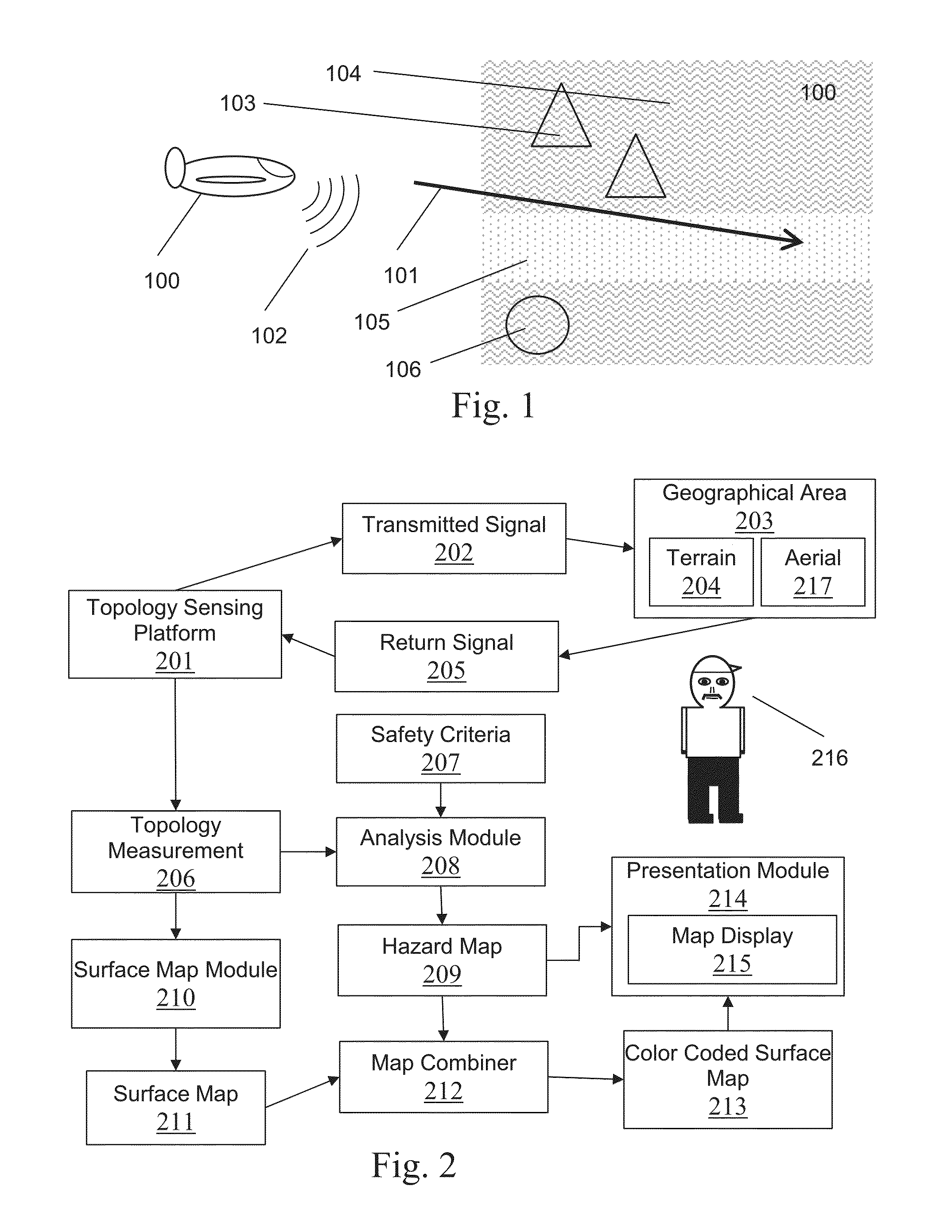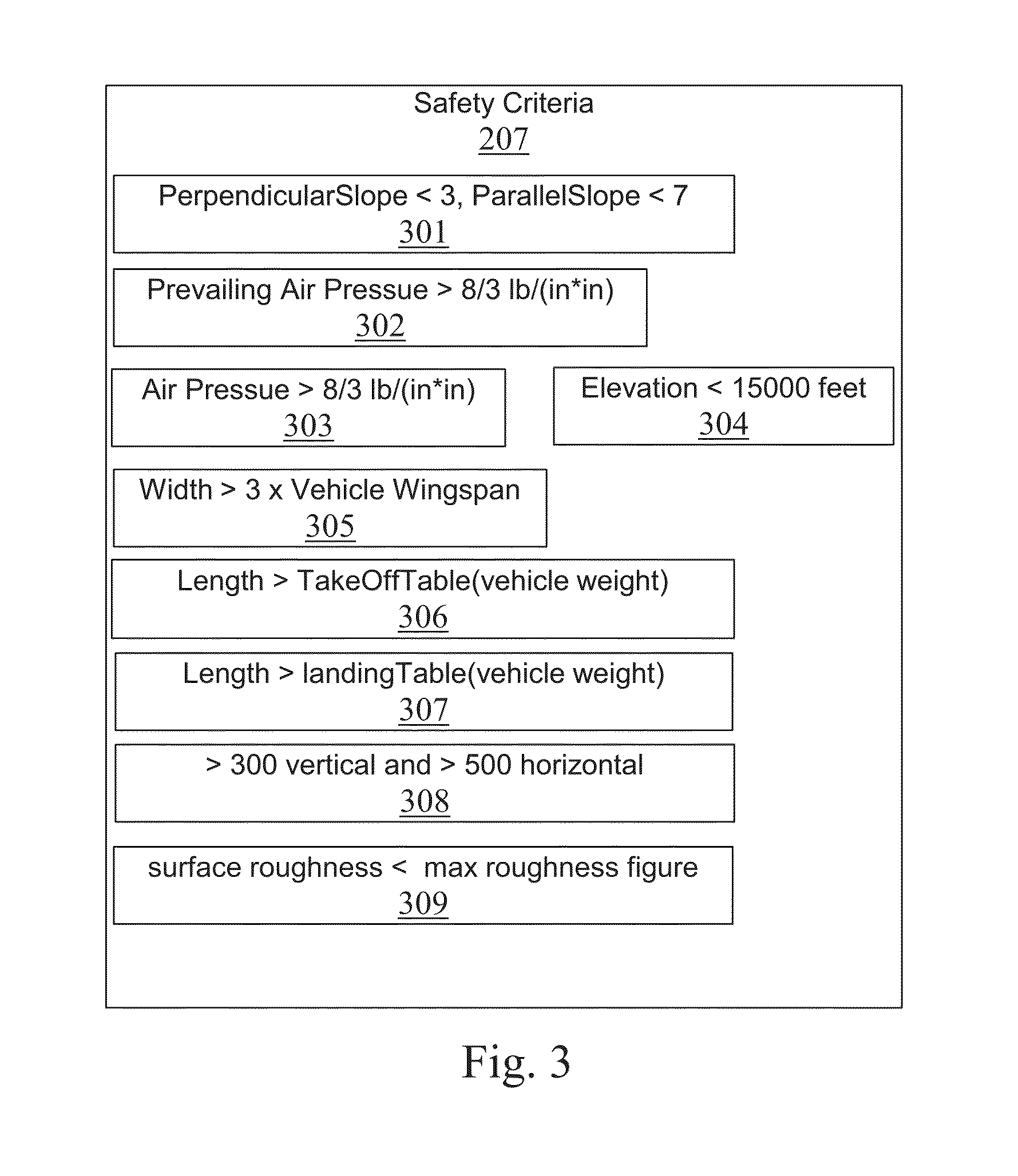Landing hazard avoidance display
a display and hazard technology, applied in the field of navigation, aviation, avionics, can solve the problems of not providing the necessary depth cues for pilots, not being able to measure the surface profile more accurately than other technologies, and much of the terrain on the far side of the balloon to be unsafe for landing, etc., to achieve small safe spots or safe spots. , the effect of fine resolution
- Summary
- Abstract
- Description
- Claims
- Application Information
AI Technical Summary
Benefits of technology
Problems solved by technology
Method used
Image
Examples
Embodiment Construction
[0023]The particular values and configurations discussed in these non-limiting examples can be varied and are cited merely to illustrate embodiments and are not intended to limit the scope of the invention.
[0024]Landing hazard avoidance displays can provide rapidly understood visual indications of where it is safe to land a vehicle and where it is unsafe to land a vehicle. Color coded maps can indicate zones in two dimensions relative to the vehicles position where it is safe to land. The map can be simply green (safe) and red (unsafe) areas with an indication of scale or can be a color coding of another map such as a surface map. The color coding can be determined in real time based on topological measurements and safety criteria to thereby adapt to dynamic, unknown, or partially known environments.
[0025]FIG. 1 illustrates a vehicle 10 sensing the geographic topography along its flight path 101 and producing a two dimensional hazard map 100 in accordance with aspects of the embodim...
PUM
 Login to View More
Login to View More Abstract
Description
Claims
Application Information
 Login to View More
Login to View More - R&D
- Intellectual Property
- Life Sciences
- Materials
- Tech Scout
- Unparalleled Data Quality
- Higher Quality Content
- 60% Fewer Hallucinations
Browse by: Latest US Patents, China's latest patents, Technical Efficacy Thesaurus, Application Domain, Technology Topic, Popular Technical Reports.
© 2025 PatSnap. All rights reserved.Legal|Privacy policy|Modern Slavery Act Transparency Statement|Sitemap|About US| Contact US: help@patsnap.com



